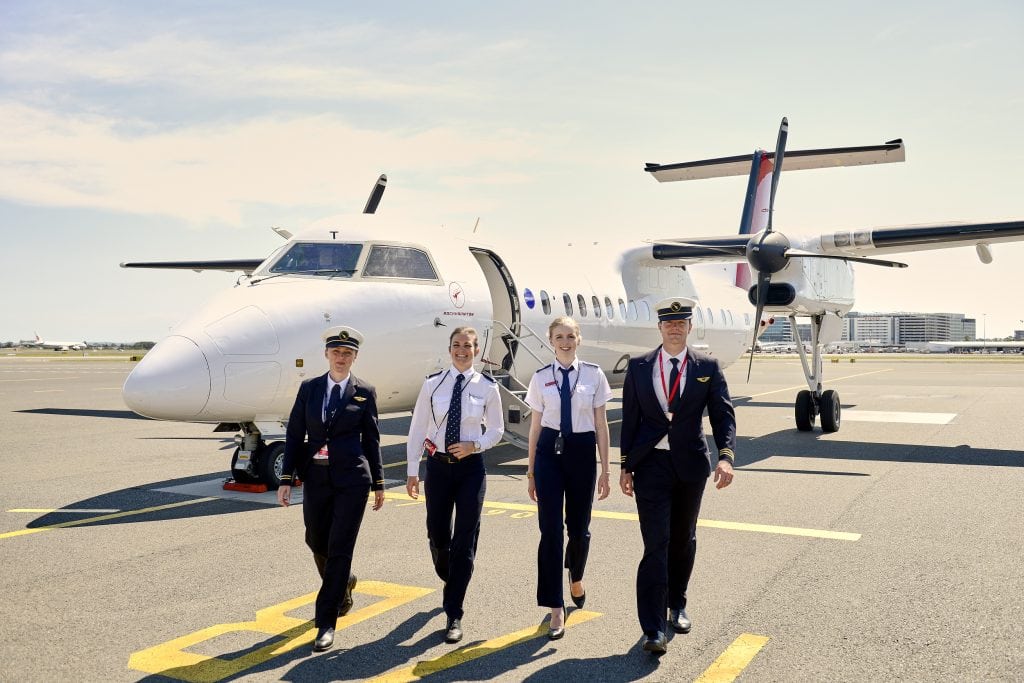Skift Take
Qantas' new pilot academy may address the airline’s needs, but won’t solve an imbalance which has already seen regional Australian airlines cancel and reschedule services. Meanwhile, the government has bowed to pressure and will again grant temporary visas to pilots after scrapping them last year.
Airline executives say it’s no coincidence that talk of a pilots shortage in Australia seems to always escalate during pay negotiations, but there seems to be more urgency this time around.
In fact, Australia’s largest airline, Qantas, recently announced plans to establish a pilot academy capable of training up to 500 pilots a year “to help meet the increasing need for skilled aviators in one of the fastest growing global industries.”
The Qantas Group Pilot Academy should open its doors to students in 2019 and is likely to be established near an existing airfield in regional Australia to provide easy access to uncongested airspace.
Qantas Group CEO Alan Joyce said the Academy would become a critical part of the national carrier’s long-term talent pipeline – and an important resource for Australian aviation.
The Academy will initially train around 100 pilots a year for direct entry into the Qantas Group, including its low-cost Jetstar subsidiary and regional carrier QantasLink. The service could scale up to 500 pilots a year, should demand warrant it.
Qantas has more than 3,500 pilots and plans to recruit a further 350 by the end of 2018.
Guido Carim Jr, an aviation lecturer at Griffith University in Brisbane, believes that Australia, like much of the world, is facing a shortage due to the exponential growth in aviation over the last few years. “The fast growth created an imbalance between pilot formation and job offers since it takes up to three years on average for an inexperienced person to become a ready-for-airline pilot,” he said.
Smaller carriers take the brunt
Australia faces a significant geographic pilot imbalance, with smaller regional carriers struggling to meet their needs. Among the worst-affected is Darwin-based Air North, which, in mid-January, was forced to cancel or reschedule services.
The airline issued a public apology to affected customers, noting that it had 11 positions vacant. “The induction process requires new pilots to undertake mandatory simulator and flight training before they are qualified to operate our aircraft. This process takes time, and we are currently spending in excess of half a million dollars on recruitment and training in order to continue to provide safe and reliable services for all our customers,” the airline said.
Another regional carrier, Alliance Airlines, is experiencing a “blockage rather than a shortage,” according to CEO Lee Schofield.
Alliance differs from its rivals in that it trains its own pilots – as many as 30 this year.
“You can only train so many pilots at a time, so you have to manage your growth very carefully. In our case, there’s increased demand for our services and we have to manage the pipeline so that we’re still producing high-quality pilots at a rate that keeps up with our growth,” he said.
Schofield accepts that Alliance is a training ground for larger airlines, saying, “I’d almost be concerned if other airlines didn’t want our pilots.”
Carin of Griffith University said the small/large airline imbalance was exacerbated by the career appeal of the major airlines, which “pay more, offer better work conditions (large aircraft, layovers in luxury hotels, etc.) and offer ambitious career progression plans.”
However, Schofield says his carrier has also attracted a group of senior pilots who joined Alliance after careers in major airlines. For pilots “at the other end of their career,” smaller airlines like Alliance mean fewer nights away from home and other benefits, he said.
While the larger carriers are impacted less than their regional counterparts, even they are experiencing shortages due to the combination of pilot ageing and significant traffic growth in the last two years, said Carim.
Temporary visas for trained pilots
The Australian government has been pressured into a backflip after announcing a halt to temporary visas for pilots in an immigration shake-up last April.
After being removed from the list of occupations eligible for foreign worker visas, pilots are once again eligible for two-year visas, but only for regional areas outside big cities.
The visa reversal has not escaped controversy, and Gordon Bretag, a retired pilot and trainer, recently told Australian Federation of Air Pilots members that instead of granting work visas to pilots, pressure needs to be applied to airlines to open recruitment of pilots firstly to appropriately qualified Australians.
He also called for the establishment, as a matter of urgency, of an industry/government joint-venture flying academy, aimed at producing suitable future pilots.
In the absence of government-backed pilot training, it is up to the airlines to ensure their future needs are met.
Besides its recently announced Academy, Qantas is also working with five universities, including Griffith, in the Qantas Future Pilot Program. Under this scheme, students are being mentored by experienced QantasLink pilots throughout their studies, with the aim of transitioning to a job at QantasLink after graduation.
Carim sees the university as a major player in the pilot pipeline. “We constantly adjust our programs according to the industry need via the industry board advisory. Representatives from major aviation stakeholders give us inputs into how to improve our curriculum and deliver better professionals to the aviation setting.”
The Daily Newsletter
Our daily coverage of the global travel industry. Written by editors and analysts from across Skift’s brands.
Have a confidential tip for Skift? Get in touch
Tags: airline innovation, australia, gateway, labor, pilot shortage, pilots, qantas, regional airlines
Photo credit: Qantas has announced a pilot training scheme on the back of an earlier link-up with Australian universities. #ends Qantas
